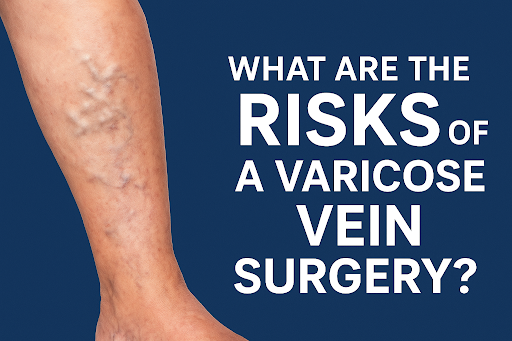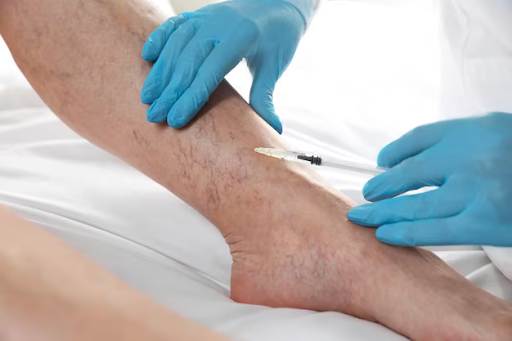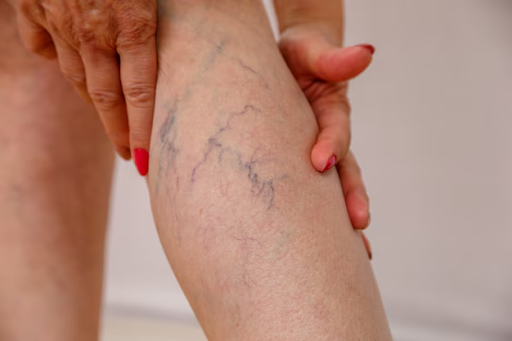If you’ve just rolled your ankle and are feeling discomfort on the inside of your foot, you might be experiencing a deltoid ligament sprain. This is less common than a lateral ankle sprain but can be just as bad, especially if not treated properly.
At MVM Health, our expertise lies in the non-surgical treatment of musculoskeletal injuries, such as ankle ligament sprains. We will walk you through it all, you’ll be educated about symptoms and causes, as well as innovative treatment.
What Is the Deltoid Ligament?
The deltoid ligament is a broad, fan-shaped ligament sitting on the medial side of the ankle. It connects the tibia or shinbone to the foot bones and stabilizes the ankle against forces producing eversion (rolling outward).
When the deltoid ligament has been sprained, the ankle will feel unstable, painful, and difficult to use, especially when walking or standing.
What Causes a Deltoid Ligament Sprain?
Sprain to the deltoid ligament typically occurs due to an acute twisting out action of the foot, which causes the ankle to be pushed into eversion. Frequent causes include:
- Sports Injury: Sudden direction change, jumping, or clumsy landing when playing sports like basketball, soccer, or football tends to overstrain the ligament.
- Incidental Missteps: Turning your foot out while stepping off a curb or walking across uneven ground.
- Motor Vehicle Crashes: The foot can be jammed into a twisted direction, causing the ligament to tear.
- Chronic Instability: Ankle sprains that occur repetitively over many years can cause the ligaments to get weakened and increase your chances of getting deltoid injury.
- Severe Trauma: Occasioned by falls or direct blows to the medial ankle can also lead to deltoid ligament damage.
These sprains can vary in intensity from mild overstretching to total tears, and are graded as Grade I, II, or III.
Identifying the Symptoms
Symptoms of a deltoid ligament sprain are most likely to be identifiable but often misdiagnosed as other types of ankle injuries. In the event that you experience the following, it would be advisable to consult a medical professional:
Pain on the inner side of the ankle
- Swollen and bruised ankle
- Difficulty putting weight on the foot
- A feeling of instability or weakness in your ankle
- Tenderness on palpation on the inside of the ankle
As opposed to the usual lateral sprains, deltoid sprains tend to need longer recovery time and more observation.
Diagnosing the Injury
MVM Health diagnosis starts with a full history and physical exam. Your doctor will take your swelling, range of motion, and pain reaction. If a more serious injury is being considered, imaging like MRI or X-rays may be prescribed to rule out fractures or seek a full tear of the ligaments.
Treatment Options That Work
The better news is that most deltoid ligament sprains can be managed without surgery. Your treatment will vary depending on how bad the sprain was and how many days have passed since the injury.
Rest and Support
- For mild to moderate sprains:
- Limit weight-bearing on the ankle
- Use crutches, a walking boot, or an ankle brace
- Elevate the ankle and apply ice to reduce inflammation.
These simple steps enable the ligament to heal and prevent re-injury.
Physical Therapy
Once the initial pain and swelling have passed, a rehabilitation program directs the return of motion, strength, and balance. This is necessary for full recovery and prevention of recurrent sprains.
Therapy can include:
- Light exercises for range of motion
- Strengthening of the stabilizing muscles
- Proprioception training to improve ankle control
Regenerative Treatments at MVM Health
For patients with persistent symptoms or worse injuries, MVM Health also offers advanced regenerative therapies. These include:
- High-dose platelet-rich plasma (PRP) injections
- Stem cell therapy
These guided injections are designed to reduce pain, speed healing, and spare you from the necessity of surgery. They’re ideal for athletes, active individuals, or just someone who needs to resume normal life in a rush.
Healing Time and Recovery Outlook
Healing time varies based on the grade of the sprain:
- Grade I: 2–3 weeks rest with light rehab
- Grade II: 4–6 weeks, with bracing and physical therapy
- Grade III: May take many months and require advanced care
Your recovery plan at MVM Health is individualized to return you to maximum function with confidence.
When to See a Specialist
Do not delay getting treated if:
- You cannot weight-bear in 48 hours
- Pain and swelling are worsening
- You feel instability or “give” in your ankle
- Symptoms do not improve with rest and ice
Getting the right diagnosis and treatment on time is the game-changer. MVM Health’s experts are adept at treating ankle ligament sprains, even the complex ones that don’t heal on their own.
Get Back on Your Feet with MVM Health
A deltoid ligament sprain can take you out of commission, but with proper care, you can recover more rapidly and avoid long-term issues. Whether conservative care is in order or you are interested in today’s regenerative options, MVM Health is with you every step of the way.
We are non-surgical specialists, and we aim to make you feel better by reducing pain, strengthening stability, and restoring you to the things you love.
Is it time to move forward?
Visit MVMHealth.com to schedule your consultation or learn more about deltoid ligament sprain treatment options tailored just for you.








